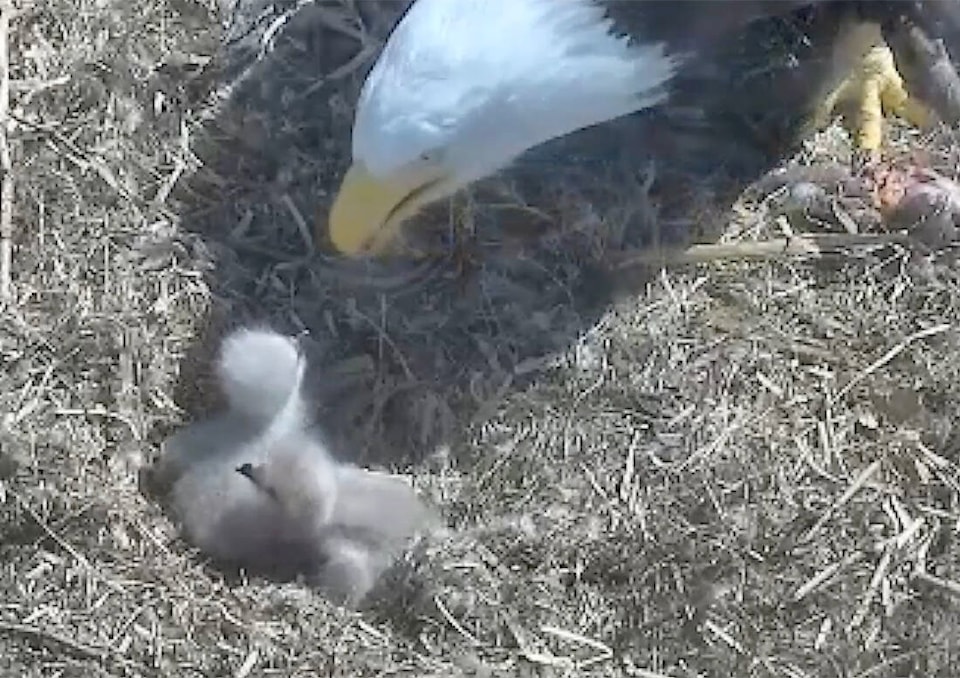A second baby eagle has hatched in a Semiahmoo Peninsula bald eagle nest.
This year, the first egg in the White Rock nest — livestreamed 24/7 on camera by the Hancock Wildlife Foundation — hatched early on Monday morning, wobbly and fuzzy and new to the world.
Its sibling followed suit early Wednesday morning (April 17), hatching shortly before 4:30 a.m.
Both eagle parents take turns at the nest, and have been busy feeding the baby birds since.
The first hatched eaglet was busy practising vocalizing Tuesday morning, chirping and trilling as one of its parents reorganized the nest, which was built by the Hancock Wildlife Foundation, along with several others throughout the Lower Mainland and Fraser Valley.
READ ALSO: Egg watch: Baby bald eaglet hatches in B.C. nest
The White Rock nest is located on a private portion of the White Rock bluff overlooking the water, only about 100 feet from the back porch of a private home, captured on three cameras constantly.
It takes four days for the eaglets to hatch, or to go through what is called the pipping process, biologist and conservationist David Hancock explained to Black Press Media last year, during bald eagle egg-laying and egg-hatching season.
“Pipping is the action of breaking through from when they’re sealed inside — breaking a hole through the inside membrane and calcium,” the Hancock Wildlife Foundation founder said.
The baby eaglets have a small, but sharp, bit of calcium on the top of their beak at the end, called an egg tooth, Hancock explained.
“It’s ever so small, but it’s sharp! They scratch with that on the inside of the shell. From the moment of getting air into the bird, it just gets stronger and stronger and moves more vigorously.”
Bald eagle eggs usually take around 37 days to hatch, following by another 83 to 84 days in the nest as they grow, fed and guarded by mama and papa in turn before they take their chances at flying.
To view the eagle nests, visit hancockwildlife.org and click on the live cams tab.
